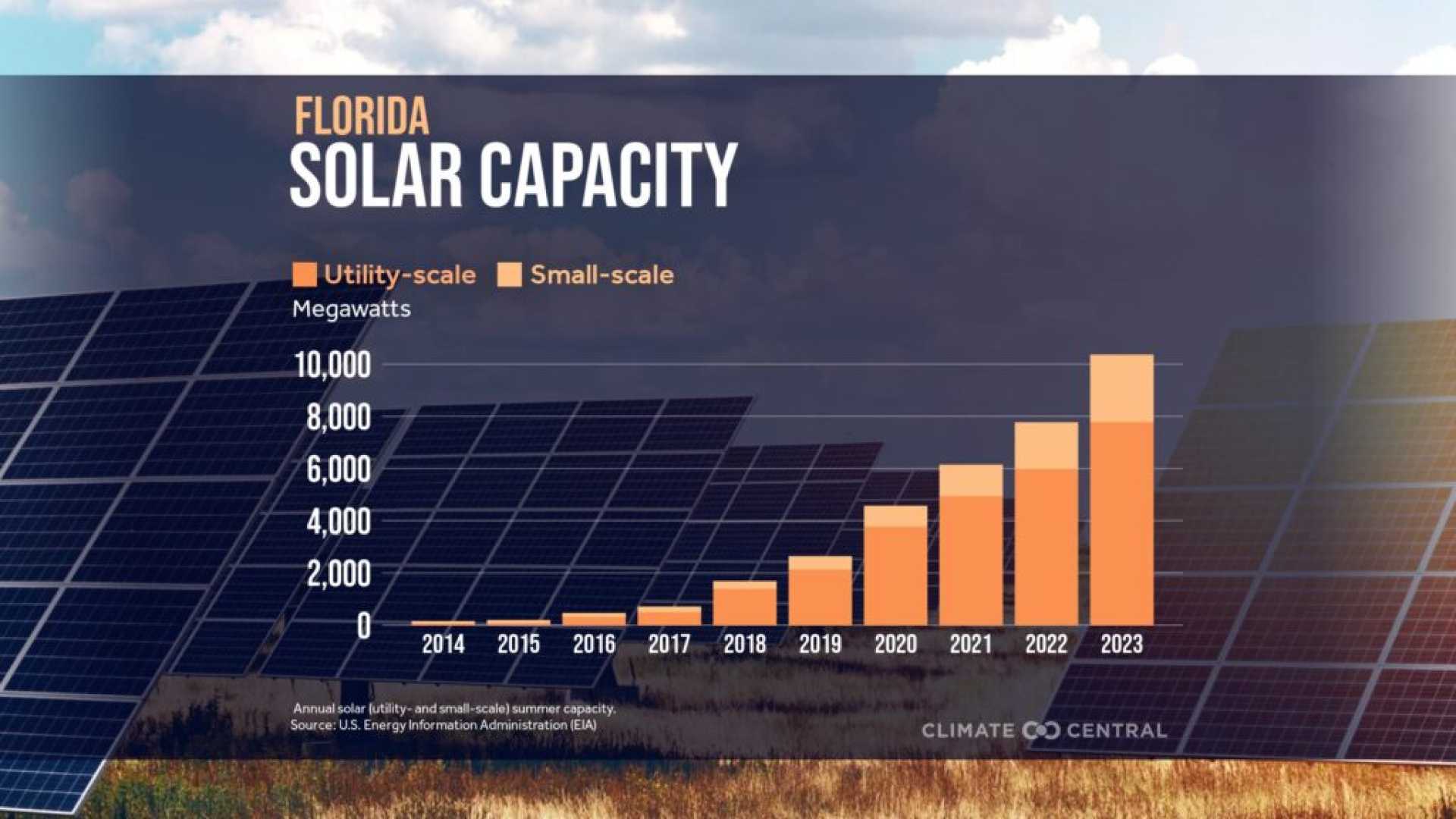Business
Florida Overtakes California in Solar Energy Growth

TALLAHASSEE, Florida — Florida’s solar energy sector has made significant strides, surpassing California in utility-scale solar capacity for the first time. In 2024, the Sunshine State added more utility-scale solar than any other state, with over 2.7 gigawatts of new capacity coming online, according to recent reports.
Despite removing climate change as an official state policy in 2024, Florida’s growth in solar energy is being driven primarily by utility-scale projects rather than residential rooftop installations. Florida Power & Light (FPL) has played a crucial role, contributing over 70% of the state’s new solar additions last year.
“This is not a fluke,” said Sylvia Leyva Martinez, a senior analyst at Wood Mackenzie. “Florida is now shaping national solar growth.”
The state’s streamlined regulations allow developers to bypass lengthy siting reviews for projects under 75 megawatts, significantly speeding up the construction process and reducing costs. “There’s no silver bullet,” said Syd Kitson, founder of Babcock Ranch. “One thing Florida got right is acceptance. Here, people want solar.”
Babcock Ranch, a community designed to be powered almost entirely by solar, managed to maintain its power, internet, and water supply even when much of southwest Florida faced outages during severe weather. “That changes how you think about energy,” said resident Don Bishop.
The economic advantages of solar are clear: as industrial demand increases and natural gas prices rise, solar energy has become a cheaper alternative, even without relying on subsidies. “Utilities aren’t building solar because it’s green,” Martinez noted. “They’re doing it because it’s cheaper.”
However, challenges loom. In July, federal legislation signed by President Trump accelerated the rollback of solar tax credits, which could impact homeowners and developers over the next few years. “It won’t kill the market,” said Zoë Gaston, another analyst at Wood Mackenzie. “But it makes the math harder.”
Analysts project a decline in rooftop solar installations in Florida, even as utility-scale growth persists. Grid constraints are becoming a concern, prompting utilities to invest heavily in energy storage and infrastructure upgrades. Babcock Ranch is testing new microgrid systems to enhance resilience. “Now it’s about scale. It’s about showing others they can do it too,” Kitson stated.
Experts worry whether Florida can maintain its solar momentum without consistent policy support. “Florida has the solar resources,” said Mark Jacobson, a professor at Stanford University. “What’s missing is political consistency.”












